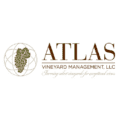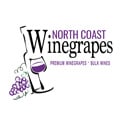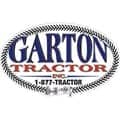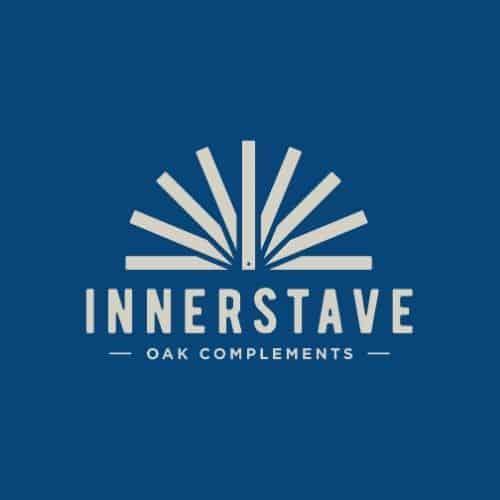Dempel Ranch Vineyards and Grapevine Nursery.
On the ranch where he was born, Bob Dempel of Dempel Farming Company raises grapevines. He grows grapes for wine, but also half of his hillside vineyard/nursery is devoted to the continuation of noteworthy grapevines.
When I met him at his Hopland vineyard off Highway 101, six workers were clipping long canes from Gewurztraminer vines and bundling them in groups of 100 “sticks”. Known as bud wood, each stick is dotted with buds that will be used to graft onto rootstock cuttings and grown to maturity.
“We normally leave five or six buds on a bud wood stick,” says Dempel. During my visit, the crew was cutting canes for an order of 80,000 Gewurztraminer buds for a commercial nursery. Bud wood must be cut when the vines are fully dormant, immediately transported to the nursery and put in cold storage until the grafting procedure begins.
How is it that this native Mendocino County resident, who moved away and had another career, was drawn to start a grapevine nursery? His story begins in the 1950s when he was a student at Santa Rosa Junior College. He worked at a dairy next to one of Sonoma County’s legendary vintner, Dewey Baldocchi of Mount Olivet Vineyards.
“I stopped by one afternoon to buy a jug of his wine,” says Dempel. There was no way Baldocchi was going to sell his wine to this underage student. Disappointed, Dempel went back to work lamenting the fact to his coworkers. They told him to wait until later in the day after Dewey’s attitude was tempered by tasting his product all afternoon. Sure enough, Dempel went back and Baldocchi told him to take the wine and throw his money in the jar.
Not only did Dempel and Baldocchi become friends after that but the taste and significance of that Zinfandel percolated in the back of Dempel’s mind for a few decades. For the next twenty years Dempel was in the agricultural chemical supply business which brought him into contact with growers all over the wine country.
One time he was out in a vineyard with the late Andre Tchelistcheff, a renowned, revered winemaker in Napa Valley. Dempel noticed him putting flags on some of the vines. “He marked the vines which had the flavors he liked and were visually disease free. He later took the dormant cuttings from flagged vines to propagate more like them,” says Dempel.
That gave Dempel an idea to see about getting some cuttings from the old Baldocchi vineyard. In 1996 he brought six sticks to the University of California at Davis Foundation Plant Service (FPS), which is the only place to get cuttings and bud wood certified disease free. The cuttings from FPS were then planted at the Dempel Ranch in land that had been approved for use as a grapevine nursery by California Department of Food and Agriculture (CDFA).
At the time the only Zinfandel clones certified at FPS were large clustered with big berries that were best for white Zinfandel. One of the cuttings that Dempel took from the Baldocchi vineyard was disease free. It did not require any heat therapy which can alter the integrity of the bud and its comparability to the original vine. “I got the Baldocchi Zinfandel Clone 8 certified,” says Dempel. He is now the registered proprietary owner of that clone.
He partitioned off half of his 21-acre vineyard into the “nursery” to raise Zinfandel and other varieties. He grows the bud wood to sell to grape growers and nurseries looking for the kind of rich, intense flavors the old Zinfandel vines are known for. In order to ensure that he had a backup should something happen to the original Clone 8 vines, he has a 150-vine patch planted to Clone 8 separated from the rest of his vineyard. No tractors are allowed into this one which lessens the possibility of contamination.
In addition to the Baldocchi Zinfandel, Dempel also got a proprietary clone of Petite Sirah certified from FPS. It came from the historic Foppiano vineyard near Healdsburg and is identified as Petite Sirah Clone 8. “Petite Sirah is known as Durif in France,” says Dempel. Pretty soon you will see them used interchangeably.
Dempel also grows Cabernet Sauvignon and a couple of acres of Alicante. “As the only grape that has red juice, Alicante’s role has been as a blending grape when you need more color,” says Dempel. He sells most of his crop for use in grape stomps – perfect for getting that red stain on your feet.
Every vine Dempel sells for bud wood is numbered with its row and location in the row. A detailed paper trail follows its progress from bud to vineyard. In addition to the FPS and the CDFA certification, Dempel’s nursery received an independently audited sustainable certification from Protected Harvest. Protected Harvest “certifies the use of sustainable agriculture practices through the development of stringent, transparent, and quantifiable standards.” Dempel Ranch and Grapevine Nursery is one of only two California nurseries to receive Protected Harvest certification. In order to get this, Dempel had to create a vision statement, attend a full day seminar and file fertilization, nutritional enrichment, irrigation, human resource and economic threshold plans. Each of 11 items is scored and Dempel’s Nursery passed at the top.
Dempel’s vineyard patches are each named for his wife and their daughters. Shirley’s Patch honors his wife who is a seamstress. Lori’s Court is for daughter Lori’s tennis prowess. Kathie’s flat is named because this daughter is a musician. Debbie’s Stretch relates to her exercise regime.
This is a busy time in the vineyard for Dempel. Between February and April the vines begin pushing buds out on the canes where last year’s fruit was picked. His pruners cut back the cane leaving two or three buds on each spur to grow into this season’s grape crop. In non-nursery vineyards the canes that are cut are typically mulched back into the ground. The canes in the nursery get separated, trimmed, counted, tagged and prepared for shipping.
We took his four-wheeler up to the Zinfandel nursery block, “our flagship vineyard,” he says. The long narrow valley rises from 700 feet to 1400 feet. Dempel has about 1200 vines of the Zinfandel Clone 8. The grapes from the nursery go to River Road Winery, which puts Dempel Vineyard, Mendocino County on its label.
This time of the year he is filling orders for cuttings. Two weeks ago Dempel shipped 5,000 cuttings. He has an order for 25,000 cuttings for his Cabernet Sauvignon Clone 7, which grows on the hillside. “The Cabernet buds later and won’t be ready for another couple of weeks,” he says.
From the top of his vineyard, the sweeping view of Sanel Valley stretches eastward to the Mayacama Mountains. Dempel’s family ranch unfolds below. In the 1920’s his grandfather Crawford bought the 400- acre ranch after his Buick dealership in Ukiah was destroyed by fire. “He decided to go into farming,” says Dempel, who continues the livelihood and is inspired by the propagation of historic grapevines.
















































